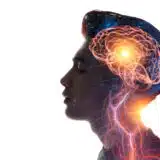What is Applied Behaviour Therapy? What is it and is It Right for your Kids?

Knowing the Fundamentals of Aba Therapy and Its Potential Advantages for Kids With Behavioral Issues
What is Therapy? 06th May, 2023
Children with autism spectrum disorder (ASD) and other developmental challenges are the main target demographic for applied behavior therapy (ABT). ABT is a systematic, evidence-based approach that is founded on the concepts of behavior analysis.
The major objective of ABT is to notice and correct socially relevant behaviors in order to improve the quality of life for both the child and their family.

Through the use of individualized assessment and intervention, ABT has proven to be highly effective in enhancing various skills, such as social interaction, self-care, communication, and play, while simultaneously addressing and managing challenging behaviors.
By breaking down complex tasks into smaller, achievable steps and employing positive reinforcement strategies, ABT fosters a supportive and engaging learning environment that enables children to achieve their full potential.
The success of ABT lies in its adaptability to each child’s unique needs and its commitment to providing targeted, data-driven interventions that yield measurable and lasting results.
Tracing the Roots of Applied Behavior Analysis (ABA)
The foundation of ABA can be traced back to the early 20th century, with the pioneering work of psychologists such as John B. Watson, B.F. Skinner, and Edward Thorndike, focused on understanding the mechanisms of learning and behavior modification through observable actions and consequences.
Dr. Ivar Lovaas, a renowned psychologist at the University of California, Los Angeles (UCLA), was instrumental in the invention and use of ABA treatments for autistic children.
In 1987, Dr. Lovaas published a groundbreaking study that demonstrated the efficacy of ABA in fostering significant improvements in the cognitive, social, and communicative abilities of young children with autism.

His early intensive behavioral intervention model (also known as the Lovaas Method) employed structured, one-on-one teaching sessions, which focused on breaking down complex tasks into smaller, manageable steps, and providing immediate positive reinforcement to promote skill acquisition.
Dr. John McEachin, a former student, and collaborator of Dr. Lovaas, has also made significant contributions to the field of ABA. In 1993, he co-authored long-term follow-up research that confirmed the effectiveness of ABA in improving the lives of autistic children.
This study highlighted the lasting positive impact of early intensive ABA therapy on participants’ cognitive, language, and adaptive functioning.
The concepts of ABA have grown and extended throughout time, encompassing a range of strategies and approaches that may be adjusted to each child’s particular requirements.
ABA’s growth and evolution have cemented its place as a premier evidence-based intervention for children with autism and other developmental impairments, proving its efficacy in promoting significant and long-term changes in their lives.
Recommended:
Elements Of Thought – Examples And What Is Critical Thinking
The Mechanics of ABT: How It Works and Adapts
ABT is a very flexible and adaptive intervention that may be customized to meet the individual’s specific requirements, advantages, and difficulties. This customization is a critical component of ABT’s success, as it ensures that the therapy is both relevant and effective for the person receiving it.
ABT can be provided in a variety of settings, including:
- Home-based programs: Therapists work with the child and their family in the familiar and comfortable environment of their own home.
- School-based programs: ABT is incorporated into the child’s educational setting, with therapists collaborating with teachers and other school staff to promote skill acquisition and generalization.
- Clinic-based programs: Therapy sessions take place in specialized clinics or therapy centers, where a team of professionals works together to provide comprehensive and coordinated care.
- Community-based programs: ABT is applied in real-world settings, such as parks, grocery stores, or other public places, to help the child develop and practice skills in context.
Positive Reinforcement
A cornerstone of ABT is the use of positive reinforcement to encourage desired behaviors. This involves providing immediate and consistent rewards or praise when the child successfully demonstrates a targeted skill or behavior.
This reinforcement serves to strengthen the link between the conduct and its favorable effects over time, increasing the likelihood that the kid will continue to participate in the desired behavior in the future.
Antecedent-Behavior-Consequence (A-B-C) Model
The Antecedent-Behavior-Consequence (A-B-C) model is a key strategy in ABT, as it helps therapists understand and modify the factors that influence a child’s behavior.
In this model, the “antecedent” refers to the events or conditions that occur immediately before the behavior, the “behavior” is the observable action the child engages in, and the “consequence” represents the immediate outcomes that follow the behavior.
By carefully analyzing the relationships between antecedents, behaviors, and consequences, therapists can identify the underlying triggers for problem behaviors and develop targeted strategies to promote positive behavioral change.
Crafting a Personalized ABT Program
The flexibility of Applied Behavior Therapy (ABT) to be tailored to each person’s unique requirements, abilities, and problems is a key factor in determining the therapy’s effectiveness. This personalized approach ensures that the therapy remains relevant, effective, and engaging for the person receiving it.
An integral aspect of this customization process is an ongoing assessment, which helps therapists to monitor progress, identify areas for improvement, and adjust the program as needed to optimize outcomes.
A Board-Certified Behavior Analyst (BCBA) is essential in the design, execution, and management of an ABT program tailored to the individual.
With their specialized training and expertise in the principles of behavior analysis, BCBAs are well-equipped to assess the individual’s needs, develop targeted treatment plans, and supervise the implementation of the therapy by other team members, such as Registered Behavior Technicians (RBTs).
The process of crafting a personalized ABT program typically involves several key steps:
1. Setting treatment goals: Working closely with the individual, their family, and other relevant professionals, the BCBA helps to identify specific, measurable, and meaningful goals for the therapy. These objectives may cover a wide range of skill areas, including communication, sociability, self-care, and behavior control.
2. Breaking down skills into concrete steps: In order to facilitate skill acquisition, the BCBA breaks down each treatment goal into smaller, more manageable steps. This process, known as task analysis, helps to ensure that the individual can progress at their own pace and build competence and confidence as they master each component of the skill.
3. Measuring progress through data collection: Throughout the course of the ABT program, the BCBA and the therapy team collect ongoing data on the individual’s performance and progress toward their treatment goals. This data-driven approach allows for an objective evaluation of the program’s effectiveness, as well as the identification of any necessary adjustments or modifications to the treatment plan.
A customized ABT program has the potential to deliver significant and long-term changes in an individual’s skills, behavior, and overall quality of life by stressing customization, continuing assessment, and the expertise of a BCBA.
Diverse ABA Techniques and Core Philosophy
Applied Behavior Analysis (ABA) is a versatile and multifaceted approach to behavior modification, incorporating a wide range of techniques and strategies to address the unique needs of each individual. These processes are based on the ABA core concept, which stresses the significance of positive reinforcement, data-driven decision-making, and teamwork with parents, family members, and caregivers in order to achieve the most effective and long-term results.
Some of the key ABA techniques and procedures used by instructors include:
1. Discrete Trial Training (DTT): A structured teaching method that breaks skills into small, manageable steps, and provides explicit prompts and reinforcement for correct responses.
2. Natural Environment Training (NET): A more flexible and less structured approach that focuses on teaching skills within the context of everyday activities and routines, capitalizing on naturally occurring teaching opportunities.
3. Pivotal Response Training (PRT): A play-based intervention that targets pivotal skills, such as motivation, self-initiation, and responding to multiple cues, which are believed to have widespread effects on overall development.
4. Verbal Behavior (VB) approach: A teaching method that focuses on the functional aspects of language and communication, emphasizing the importance of teaching individuals to use language as a tool to meet their needs, wants, and desires.
5. Functional Communication Training (FCT): A technique that aims to replace challenging or maladaptive behaviors with more appropriate and effective forms of communication.
Involving parents, family members, and caregivers in the ABA process is critical to the success and generalization of the skills learned during therapy. By actively participating in the process, these individuals gain valuable knowledge and skills that enable them to provide consistent support, reinforcement, and opportunities for skill practice outside of the therapy context.
This collaboration helps to create a supportive and cohesive environment that promotes ongoing growth and development.
The core philosophy of ABA places a strong emphasis on the use of positive reinforcement to encourage desirable behaviors while withholding reinforcement for harmful or disruptive behaviors.
This approach not only fosters a positive and motivating learning environment but also helps to build self-esteem and resilience in individuals as they experience the intrinsic rewards associated with achieving their goals and mastering new skills. By focusing on the principles of positive reinforcement, ABA techniques can facilitate meaningful and lasting improvements in behavior, communication, and overall quality of life.
The Evidence Behind ABA’s Effectiveness
The effectiveness of Applied Behavior Analysis (ABA) is supported by a substantial body of research and empirical evidence. Both the US Surgeon General and the American Psychological Association have recognized ABA as an evidence-based best-practice treatment for individuals with autism spectrum disorder.
Numerous studies have demonstrated the benefits of intensive, long-term ABA therapy for children and adults with autism, highlighting improvements in communication, social skills, self-care, and adaptive behavior.
These studies consistently indicate that early, comprehensive, and individualized ABA interventions result in better outcomes, with some individuals achieving significant gains in cognitive, language, and social functioning.
Furthermore, the beneficial benefits of ABA therapy have been demonstrated to last over time, confirming its standing as a potent and effective intervention in the treatment and management of autism spectrum conditions.
Addressing ABA’s Controversies and Concerns
While ABA therapy has been widely recognized for its effectiveness in treating individuals with autism spectrum disorder, it has also faced controversies and concerns over the years. Critics have raised issues related to ABA’s approach to neurodiversity, arguing that the therapy may prioritize normalization over the acceptance of individual differences.
Others have expressed concerns about the potential for ABA to suppress certain behaviors without addressing the underlying causes, or the intensity of therapy sessions that can be demanding for both children and their families.
In response to these concerns, modern ABA has evolved to incorporate a more person-centered and holistic approach to treatment.
ABA practitioners now place greater emphasis on understanding the unique needs and preferences of each individual, working collaboratively with families to develop personalized treatment plans that promote the well-being of children with autism.
Contemporary ABA techniques prioritize skill-building, communication, and social development, while also addressing challenging behaviors in a manner that respects and values neurodiversity.
By focusing on the whole person and fostering a more inclusive approach to treatment, modern ABA therapy aims to empower individuals with autism to reach their full potential while maintaining their unique identities and strengths.
The Professionals Behind ABA Services
In the field of ABA therapy, two primary roles are responsible for delivering high-quality services: Board-Certified Behavior Analysts (BCBAs) and Registered Behavior Technicians (RBTs).
- Board-Certified Behavior Analysts (BCBAs): BCBAs are the leading professionals in designing and overseeing ABA programs. They hold a master’s or doctoral degree in behavior analysis or a related field and have successfully completed a rigorous certification process. BCBAs are responsible for conducting assessments, developing individualized treatment plans, monitoring progress, and adjusting intervention strategies as needed. They also provide supervision, training, and support to RBTs and other professionals involved in the delivery of ABA services.
- Registered Behavior Technicians (RBTs): RBTs are paraprofessionals who work under the supervision of a BCBA to implement ABA therapy plans. They receive specialized training in ABA principles and techniques and must pass a certification exam to demonstrate their competence in applying these skills. RBTs work directly with individuals with autism, carrying out the interventions designed by the BCBA and collecting data to monitor progress.
When selecting an ABA provider, it is crucial to consider the qualifications and experience of the professionals involved. Key factors to keep in mind include:
- Appropriate certification: Ensure that the ABA team includes BCBAs and RBTs who hold valid certifications from the Behavior Analyst Certification Board (BACB).
- Relevant experience: Look for providers with a track record of successfully treating individuals with autism, and inquire about their experience working with children or adults who have similar needs and goals as your loved one.
- Ongoing professional development: ABA is a dynamic field, with new research and best practices continually emerging. Seek professionals who stay up-to-date with the latest developments and are committed to refining their skills and knowledge.
You may help guarantee that your loved one receives the highest level of care and support in their journey toward greater functioning and independence by carefully assessing the qualifications and experience of ABA providers.
Recommended:
What is Occupational Therapy? For Parents and For Kids
FAQs
How is applied Behavior Analysis important in early childhood education?
ABA helps identify and modify behaviors in young children, improving learning, social skills, and overall development.
What is applied Behavior Analysis in your own words?
ABA is a systematic approach to understanding and changing human behavior by using positive reinforcement and other techniques.
What is applied Behavior Analysis for children?
ABA for children involves using behavior analysis principles to teach new skills, reduce problem behaviors, and enhance development.
What is applied Behavior Analysis therapy used for?
ABA therapy is used to address behavioral challenges, improve social skills, communication, and adaptive functioning.
How is applied Behavior Analysis important in early childhood education?
ABA helps early educators support children’s behavioral and learning needs, fostering positive outcomes and academic progress.
The Bottom Line
Applied Behavior Therapy (ABT) offers numerous benefits for children, helping them develop essential skills and effectively manage their behaviors. The key to maximizing these advantages lies in tailoring the therapy to meet the unique needs of each child. You have a significant impact on this process as a parent or caregiver by making sure your kid receives the correct support and direction.
It is crucial to carefully consider the suitability of ABT for your child and to consult with qualified professionals, such as Board-Certified Behavior Analysts, who can help design a personalized intervention plan. You may inspire your child to reach their greatest potential and overcome obstacles by doing so.
Take the time to seek out information and guidance from a variety of sources, and be patient and persistent in your efforts. Engage with a supportive community of professionals and fellow parents who share your commitment to helping your child thrive. This collaborative approach will strengthen your knowledge and provide you with invaluable emotional support.




















